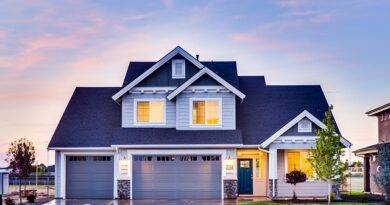The B&D Interview: Alicia Huey, Chair, National Association of Home Builders
Reflecting on 2023, the NAHB leader discusses trends, advice and the future of homebuilding
 Builder and Developer: What is the National Association of Home Builders (NAHB) most proud of for 2023?
Builder and Developer: What is the National Association of Home Builders (NAHB) most proud of for 2023?
Alicia Huey: This has been an extremely challenging year, with steadily rising mortgage rates exacerbating the housing affordability crisis as rates reached a 23-year high at nearly 8% by late October. This high interest rate environment could have resulted in a shockwave to the industry similar to what happened during the Great Recession.
But even as the resale market pulled back because of the mortgage “lock-in effect,” NAHB was able to work with our local and state associations to help them reach out to the public to underscore the advantages of purchasing new homes in this changed economic climate. Through strategic buyer incentives, new home sales have averaged roughly 30% of the market this year, compared to a historical norm of 12-14%.
Helping builders to navigate a very difficult economic terrain, even as they also continue to grapple with high construction costs, a shortage of skilled workers and excessive regulations, is something that all who are associated with the homebuilding industry can be proud of.
B&D: What trends have you seen emerge throughout 2023?
AH: The big story of 2023 has been the rapid rise in mortgage rates and how this has affected the housing industry. Turning back to home sales, as mortgage rates have steadily increased, buyers have become much more price-sensitive. A buyer who purchased a $400,000 home with a mortgage rate of 7.79%, which was the Freddie Mac weekly rate at the end of October, would pay roughly $850 more per month than someone who purchased the same home at a 3.5% rate.
Builders are adjusting to this new economic paradigm by constructing smaller homes to keep housing affordable. And with housing costs highest in the densest counties, single-family market share continues to shift from large population centers to exurban markets, where land is cheaper and homes are more affordable.
NAHB’s latest Home Building Geography Index, a quarterly report that measures building conditions across the country, shines a spotlight on this changing geography for home construction. Multifamily and single-family construction have shifted to lower-density markets, with market share gains for those types of markets. This is especially true for apartment construction, which has seen a segment share decline for large metro areas as development shifts to the suburbs and exurbs.
…new home sales have averaged roughly 30% of the market this year, compared to a historical norm of 12-14%.”
B&D As we head into the new year, what advice do you offer homebuilders?
AH: The best advice I can give to homebuilders is to stay positive. This past year has been an extremely challenging period for the housing industry. Rising costs stemming from surging interest rates, excessive regulations and a persistent lack of construction workers have dramatically affected home prices and rental costs.
But in a positive development for NAHB and the housing industry, the Federal Reserve appears unlikely to raise interest rates further unless clear signs emerge that strong economic growth could trigger a rise in inflation. We expect the Fed to hold rates steady in the first part of 2024 and then gradually ease as economic conditions warrant. With plenty of pent-up consumer demand, we anticipate that single-family construction will show a significant pick-up in the latter half of 2024 as mortgage rates begin to move lower. Building more homes and apartments is the best way to address the nation’s growing housing affordability challenges.
B&D: What does the future of homebuilding look like to you?
AH: Housing affordability will remain a key challenge as we move forward. To help bend the cost curve, increasing labor productivity in the homebuilding and remodeling sector is needed to, “build more with less,” and to offset rising regulatory burdens. Congress can help in this effort by promoting job training programs to prepare individuals for careers in homebuilding and support policies that will allow builders to increase the production of quality, affordable housing to meet market demand and keep the economy strong.
B&D: Does NAHB have any specific new initiatives in store for 2024?
AH: A key priority will be to coalesce our entire industry and our message is simple: “We all build.” We want builders, remodelers, associates and everyone else involved in the residential construction industry to come together because the only way we can prosper as an industry is if we all work as a unified team. The camaraderie among all 140,000+ members from many different backgrounds across the industry is what makes membership within the Federation so valuable.



